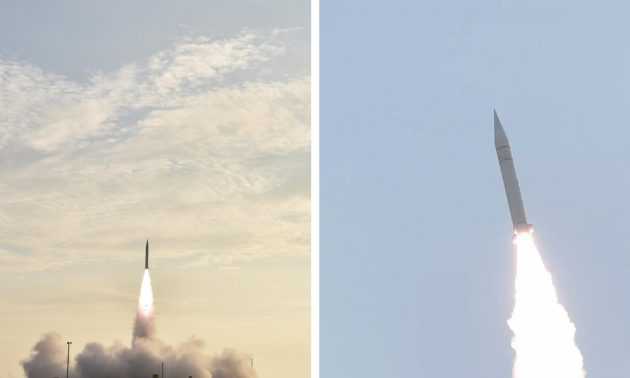China tests its hypersonic wave-rider aircraft
06 August, 2018

Chinese engineers say they have tested an aircraft based on sonic wave-riding technology and able to carry multiple nuclear warheads, which can elude all anti-missile defense systems now in use world-wide.
China’s new aircraft is loosely based on the first wave-rider, the United State’s B-70 deep-penetration strategic bomber, or Valkyrie, which was grounded for good in the 1960s.
The six-engined, delta-wing US hypersonic aircraft was designed to cruise at Mach 3+, 21,000 meters above ground, meaning it was almost impossible to intercept using aircraft or missiles. However, the ill-fated Valkyrie made a wobbly start and a string of accidents and shifts in the US-Soviet Union arms rivalry led to the program’s cancellation.
Now a Chinese version of the nuclear warhead capable wave-rider aircraft, called Xingkong, or Starry Sky, has been developed by the China Academy of Aerospace Aerodynamics under the state-owned conglomerate China Aerospace Science and Technology Corp. It was tested last Friday from an undisclosed launch site in the wilderness of northwestern China.
During its maiden fight, the wedge-shaped Xingkong ascended to an altitude of 30 kilometers at Mach 5.5-6, or 7,344 km/h, for more than 400 seconds in active phase, turning and making high-altitude maneuvers, according to the academy.
The academy also tested a host of cutting-edge technologies, such as a domestically developed heat-balance thermal protection system, various parameters were met and the wave-rider prototype was fully recovered, it added.
This type of aircraft uses the shock waves generated by its own flight as a lifting surface to enhance the lift-to-drag ratio to reach the hypersonic regime of Mach 5 or even above. Defense systems now in use by militaries around the world can only intercept incoming missiles flying at low speeds and whose trajectories are easy to predict.
The People’s Daily noted that the wave-rider gliding at such high speeds could “come and go at will” on a highly maneuverable trajectory, piercing through any anti-missile defense system in operation.
Chinese observers say any solid-propellant rocket has the potential to launch such a wave-rider, carrying both conventional and nuclear warheads, or a wave-rider can simply use its own immense kinetic energy to hit and destroy a target.
It was also reported that Russia was expected to deploy its Avangard hypersonic boost-glide vehicle mounted on the Sarmat heavy intercontinental ballistic missile by late 2018 or early 2019.
